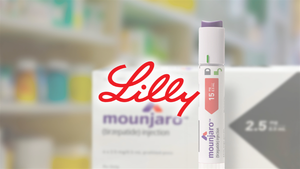
The resolution of a protracted United States government shutdown in early 2019, an event that cast a long shadow of uncertainty over the global economy, triggered a notable, albeit temporary, recovery in key commodity markets, with gold and silver emerging as prominent beneficiaries. As the federal government resumed operations after a historic 35-day impasse, investors initially breathed a sigh of relief, leading to a brief surge in precious metal prices driven by the unwinding of immediate political risk and a renewed focus on underlying economic fundamentals. This period underscored the enduring role of gold and silver as critical safe-haven assets in times of political and economic flux.
The shutdown, which spanned from December 22, 2018, to January 25, 2019, was the longest in U.S. history, stemming from a bitter dispute between then-President Donald Trump and the Democratic-controlled House of Representatives over funding for a border wall. The stalemate left approximately 800,000 federal employees furloughed or working without pay, disrupting a wide array of government services and creating an "information vacuum" as critical economic data releases were delayed. The mounting pressure from the shutdown's economic impact, including significant flight delays caused by air traffic controllers' sick leave, ultimately led President Trump to sign a temporary funding measure without the demanded wall money, effectively reopening the government.
During the shutdown, gold prices experienced a significant rally, climbing from approximately $1230 per ounce to $1290 per ounce as investors sought refuge from political instability and a volatile stock market. Immediately following the shutdown's conclusion, gold briefly peaked around $1320 per ounce, reflecting an initial "relief rally." Silver, often mirroring gold's movements, also saw an increase during this period of heightened uncertainty. However, this recovery proved transient; as broader market risk appetite returned and the stock market rebounded, gold prices retraced, stabilizing around pre-shutdown levels within three months, illustrating that the resolution itself did not create a sustained, long-term commodity bull run, but rather a temporary safe-haven surge.
Mining Giants Feel the Waves of Volatility
The temporary but sharp movements in gold and silver prices during and immediately after the 2018-2019 government shutdown had a direct impact on the financial health and strategic outlook of major precious metal mining companies. While higher commodity prices generally translate to increased revenues and improved profit margins for miners, the volatility of this period presented both opportunities and challenges. Companies with robust operational leverage would have seen their profitability disproportionately boosted by the price surge, only to face a normalization as prices retreated.
Major gold producers like Newmont Corporation (NYSE: NEM), Barrick Gold Corporation (NYSE: GOLD), Agnico Eagle Mines Limited (NYSE: AEM), and Kinross Gold Corporation (NYSE: KGC) would have experienced an immediate, positive influence on their short-term revenue expectations and potentially their Q4 2018 and Q1 2019 financial results. For instance, Newmont, one of the world's largest gold producers, would have seen its revenue prospects improve, while Barrick Gold, highly sensitive to gold price movements, would have directly benefited. Agnico Eagle and Kinross Gold, prominent Canadian producers, would also have seen enhanced revenue from higher selling prices. However, the subsequent retracement meant that these gains were not necessarily sustained, necessitating careful financial management and hedging strategies.
Similarly, leading silver mining companies such as Pan American Silver Corp. (NASDAQ: PAAS), Coeur Mining, Inc. (NYSE: CDE), and Fresnillo PLC (LSE: FRES) would have been particularly sensitive to the price fluctuations. Pan American Silver, a major primary silver producer, would have seen its revenues and profitability increase with the temporary surge. Coeur Mining, with its focus on both silver and gold, would have benefited from enhanced margins. While the temporary price uplift offered a boost, the subsequent normalization would have underscored the importance of cost control, operational efficiency, and long-term strategic planning to navigate inherent market volatility rather than relying on short-term political events for sustained growth. The stock performance of these companies often acts as a leveraged play on commodity prices, exhibiting significant swings in response to such market dynamics.
Broader Implications and Historical Echoes
The 2018-2019 US government shutdown and the commodity market's reaction served as a potent reminder of the interconnectedness of political stability, economic health, and financial market behavior. The temporary rally in gold and silver prices during the impasse reinforced their established role as safe-haven assets, a trend that consistently emerges during periods of heightened geopolitical and economic uncertainty. This event occurred amidst broader concerns like US-China trade tensions, further solidifying precious metals' appeal as hedges against systemic risks. The anticipation of potential Federal Reserve interest rate cuts, often fueled by economic uncertainty, also provided a tailwind for gold, as lower yields on government bonds reduce the opportunity cost of holding non-yielding assets.
Beyond precious metals, the ripple effects on other commodity markets were mixed. Industrial commodities like copper and aluminum showed varied responses, sometimes strengthening with news of political progress, driven by expectations of resumed infrastructure spending. Agricultural commodities, however, faced particular sensitivity due to their reliance on USDA programs and the delay of critical crop reports, leading to increased volatility. Investor confidence, while initially unsettled, historically tends to rebound quickly after shutdowns. The S&P 500, for example, posted positive returns by the end of the 35-day shutdown, suggesting that investors often look beyond political noise to broader economic conditions and corporate earnings.
Regulatory and policy implications were also significant. The shutdown brought progress on new or modified regulations to a halt, affecting agencies like the SEC, FDA, and EPA, and delaying approvals for IPOs, drug trials, and environmental permits. This disruption underscored the fragility of the regulatory framework when federal operations are suspended. Historically, the 2018-2019 shutdown, at 35 days, surpassed previous lengthy impasses, such as the 21-day shutdown in 1995-1996 and the 16-day shutdown in 2013. These events collectively highlight a recurring pattern in US governance, where political stalemates can lead to significant, albeit often temporary, economic and market disruptions, consistently driving a flight to quality in assets like gold.
The Path Forward: Adaptation and Vigilance
In the aftermath of the government's reopening, the short-term outlook for precious metals saw a brief continuation of the rally, driven by relief, before a gradual retracement as immediate safe-haven demand dissipated. The long-term trajectory for gold and silver, however, became more closely tied to overarching macroeconomic trends, including global geopolitical tensions, the ongoing US-China trade narrative, central bank purchasing trends, and the Federal Reserve's monetary policy path. While the direct influence of the shutdown faded, the "institutional memory" of such political disruptions could contribute to a baseline level of uncertainty, providing underlying support for precious metals.
For the broader commodity market, the resumption of federal operations promised a return to normalcy. Industrial metals could anticipate renewed demand from delayed infrastructure projects, while agricultural commodities would benefit from the reinstatement of USDA programs. Market opportunities emerged for tactical traders to capitalize on the initial volatility and subsequent relief rally in precious metals. For long-term investors, the event reinforced the value of portfolio diversification, including strategic allocations to gold and silver, as a hedge against recurring political and economic risks.
However, challenges persisted. The information vacuum caused by delayed economic data created difficulties for investors and policymakers in accurately assessing economic health. Companies, especially those reliant on federal contracts or regulatory approvals, faced potential lingering delays and the need for robust contingency planning. Strategic adaptations for investors included maintaining a long-term perspective, emphasizing diversification, and implementing strong risk management. Companies were prompted to enhance supply chain resilience, develop contingency plans for regulatory delays, and actively monitor macroeconomic factors and government policy shifts to navigate an increasingly complex and unpredictable operating environment.
Concluding Thoughts on Lasting Impact
The December 2018 - January 2019 US government shutdown served as a compelling case study in how political dysfunction can temporarily reshape financial markets, particularly within the commodity sector. The immediate aftermath saw a pronounced rally in gold and silver, underscoring their critical role as safe-haven assets during periods of uncertainty. However, the subsequent retracement of these gains as the broader market rebounded highlighted that while political crises can trigger acute market reactions, sustained commodity market trends are ultimately driven by deeper economic fundamentals, monetary policy, and geopolitical landscapes.
Moving forward, investors should recognize that while government shutdowns can induce short-term volatility and opportunities for tactical trading, they are generally not the primary drivers of long-term commodity performance. The lasting impact of such events lies more in their contribution to a general sense of political risk and their potential to influence broader economic sentiment, which can indirectly support precious metals over time. What investors should continue to watch for in the coming months and years are the Federal Reserve's interest rate decisions, global inflation trends, the strength of the US dollar, and ongoing geopolitical developments, as these factors will exert a far more significant and sustained influence on the trajectory of gold, silver, and the wider commodity market. The 2019 recovery was a reminder that while political storms can create ripples, the underlying currents of the global economy dictate the ultimate direction of the tide.
This content is intended for informational purposes only and is not financial advice






